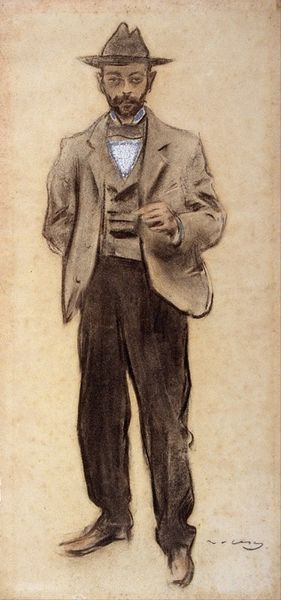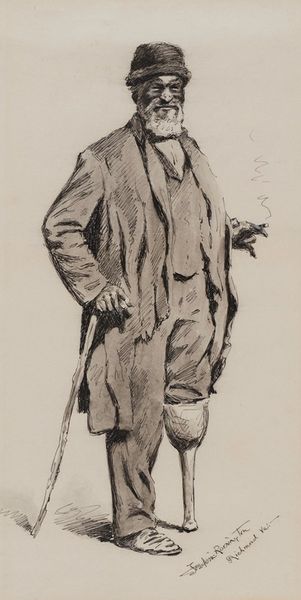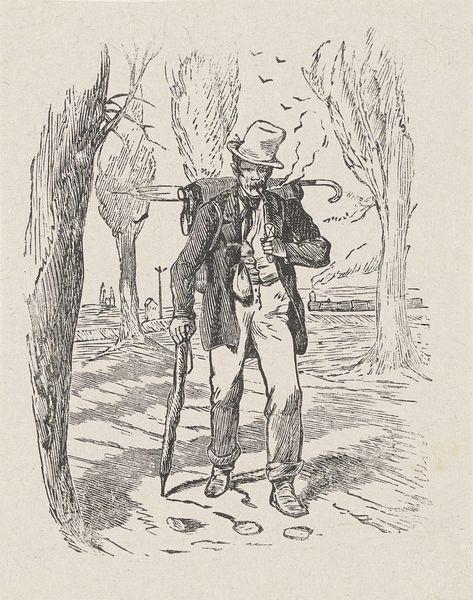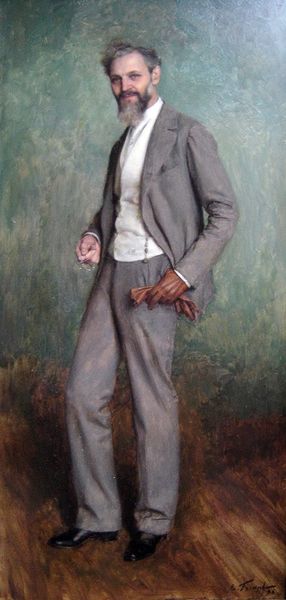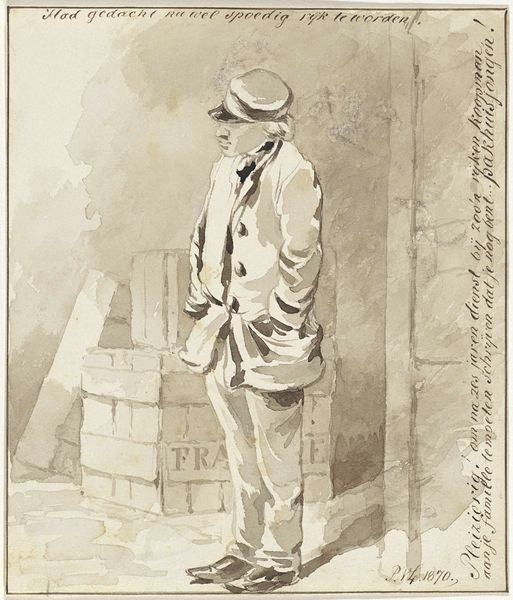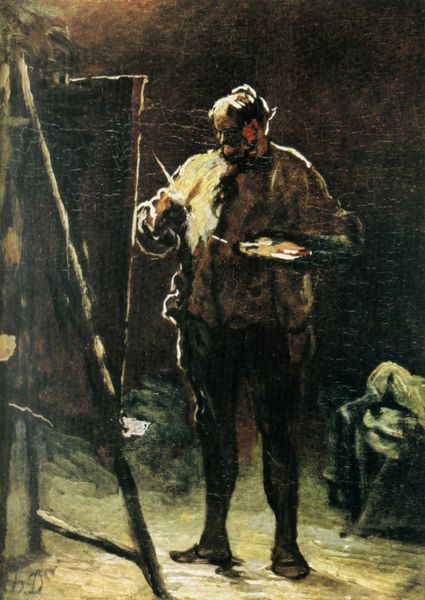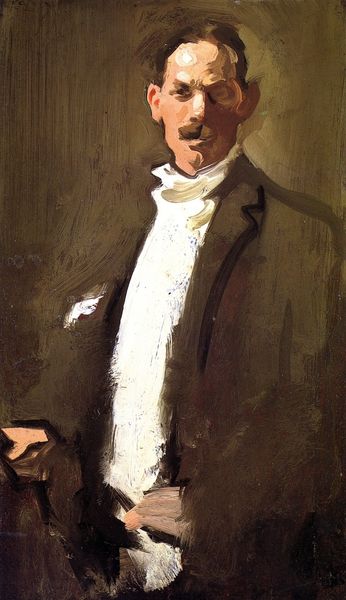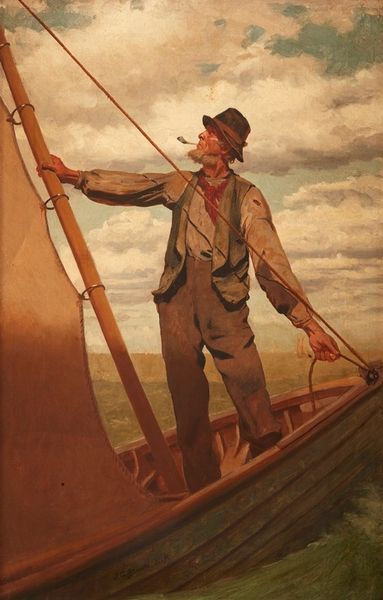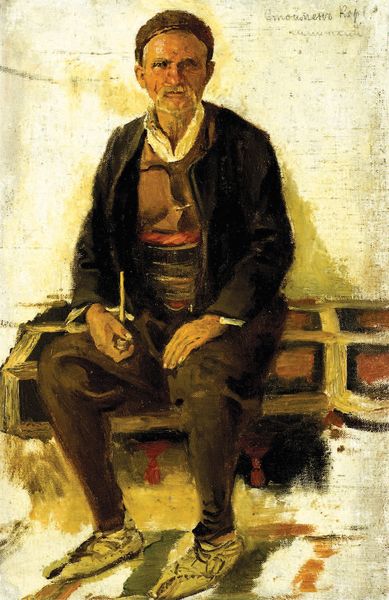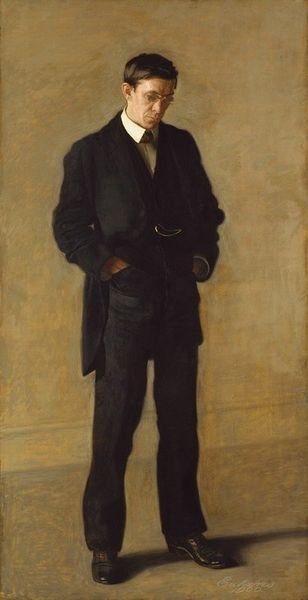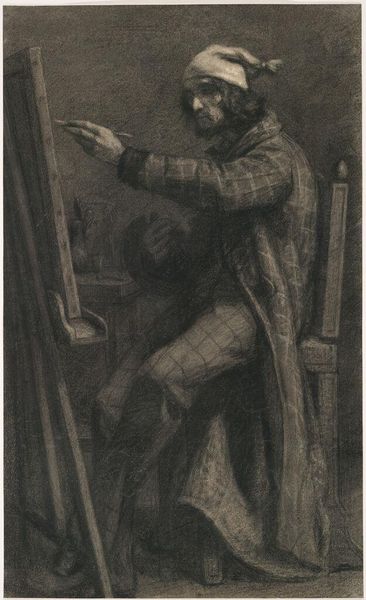
Copyright: Public domain
James Tissot’s “Self-Portrait” is a curious image, rendered with oil on canvas. Tissot uses the medium of oil paint, typically associated with fine art, to capture himself in a seemingly casual pose. The loose, sketch-like brushwork lends a sense of immediacy, as though he captured a fleeting moment. The painting's visual appearance is directly influenced by the inherent qualities of oil paint: its fluidity, its capacity for blending and layering, and its ability to capture light and shadow. Tissot, a master of Realism, often depicted scenes of contemporary life, and so we might consider how his self-portrait fits into this context. While the painting’s loose handling is a characteristic of Impressionism, it’s important to remember Tissot’s connection to the academic tradition. He brings that training to bear here, creating a tension between formal portraiture and the spontaneity of modern life. The artist’s choice of attire and setting is important too. He presents himself in outdoor clothing, as though on a leisurely stroll through the woods. This speaks to the changing social norms of the late 19th century, as industrialization led to more leisure time for the middle classes.
Comments
No comments
Be the first to comment and join the conversation on the ultimate creative platform.
